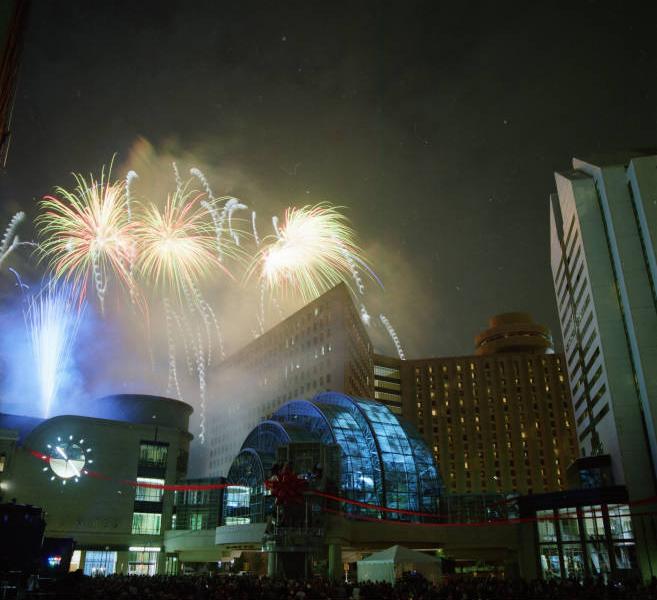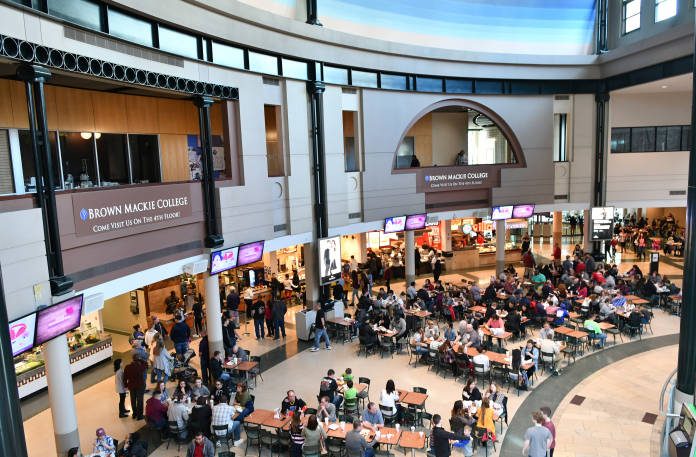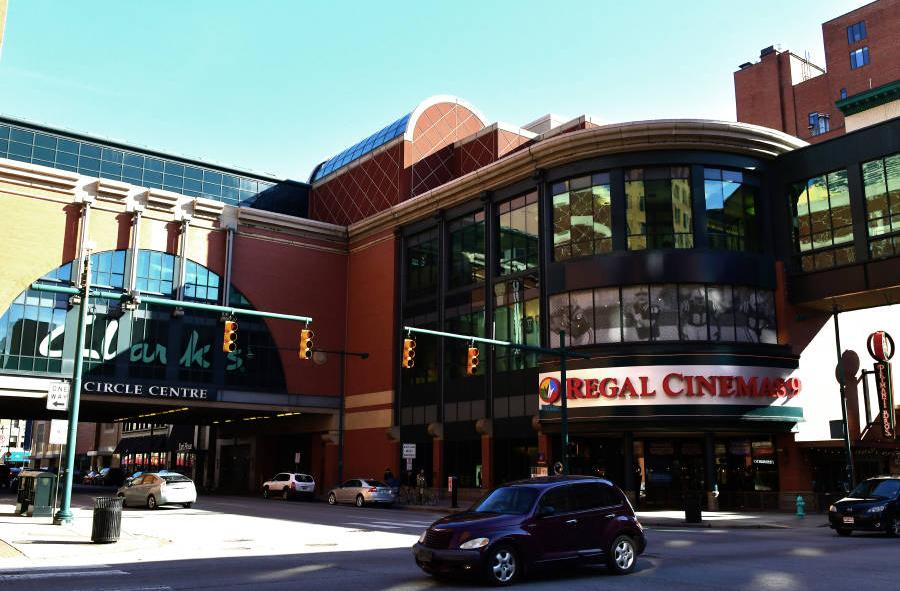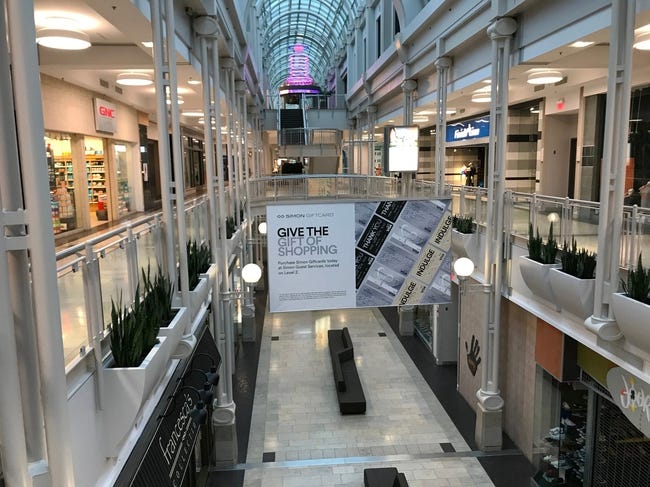On March 2, 1989, the demolition of many historic buildings in downtown Indianapolis signaled the beginning of construction of the Circle Centre Mall project that had been in the planning process for years. As the second part of a two-phase redevelopment of West Washington Street, Mayor (1976-1992) and developer Melvin Simon and Associates (see ) planned for the proposed mall to open in December 1993, as the company considered Claypool Courts and the Two West Washington Street building as phase one of the project.

From its inception, the mall was plagued with problems. Preservationists mourned the loss of many historic buildings and citizens decried the gaping holes created in the downtown landscape by the demolitions. Originally planned with Saks Fifth Avenue, , Nordstrom’s, and The Limited as anchor stores, by September 1990, the project had lost Saks. Two months later L. S. Ayres dropped its participation as a national recession caused the retail sales industry to “drown in a sea of financial troubles.”
When Simon and Associates experienced difficulty in funding the project, the city financed $287 million in city bonds. Mayor Hudnut also convinced 14 Indianapolis-based companies, including Lilly Retirement Fund, , , and , to enter as limited partners in the development for an additional $65 million. Finally, the limited partnership known as Circle Centre Development Company borrowed $72.5 million from three European banks.

By 1993 delays had brought a redesign of the mall. New York architect Ehrenkrantz Eckstut’s new plan included the suspended over Washington Street. Lilly Endowment, Inc. provided $12 million to help build this space for public arts events. Anchor stores for the 725,000-square-foot mall would be Parisian and Nordstrom. By the fall of 1993, the holes in the cityscape had become foundations covered by concrete and, in November, construction began on the ArtsGarden skywalk across Washington Street intended to link the future shops.
In August, the sought and received a reduction in the property “base” value of the project of over $33 million. Although officials claimed this would provide more money to pay back the city bonds on the project, Indianapolis Public Schools officials worried that the lowered tax valuation would force the schools to seek a property tax increase.

Encompassing an area south of the Circle almost to , primarily between Illinois and Meridian streets, Circle Centre Mall opened with much fanfare on September 8, 1995. Construction costs totaled over $300 million. The city paid more than half of the building costs, and it owns the land under the structure. A partnership of over 20 companies owned the building, most of them local.
Initially, the downtown mall was a success, with former mayor Hudnut citing its role in spurring downtown redevelopment by drawing investment and business downtown and by attracting convention business.

Sales at Circle Centre peaked in 2007 at $406 per square foot of retail space. Although the mall managed to maintain a 93 percent occupancy rate for the next three years, sales declined during the Great Recession. The rise of big-box stores and online shopping also began to hit urban shopping malls particularly hard.
In 2011, the downtown mall suffered a major blow when Nordstrom announced that it was closing its Circle Centre venue. Simon tried to attract Macy’s to fill the Nordstrom space. Instead, the Indianapolis Star opened offices in a portion of the former Nordstrom store in September 2014. One proposal forwarded in 2015 for Circle Centre included renovations for residential units, but that plan has never been carried out.
At the end of 2014, the reduced rent on the Carson Pirie Scott store, which held the location vacated by the initial occupant (Parisian), through January 2018 in an effort to hold on to the mall’s remaining anchor store. When that lease agreement expired, Carson’s closed its Circle Centre location. At that time, Simon Property Group planned a complete renovation of the mall to take place between 2018 and 2020 and to include bathroom, flooring, lighting, elevator, and entrance improvements. These plans also included a reconfiguration of the third-floor food court to attract more restaurant customers.
Yet Circle Centre seemed to defy expectations. Even when Carson’s closed, Circle Centre garnered $13 million in profit in 2018. Despite continuing to lose stores and restaurants, Circle Centre also managed to finish each year with a large proportion of its space rented. With no anchor store, however, the mall increasingly became a hybrid of traditional and non-traditional retail, entertainment, restaurant, and open-concept office space.

The COVID 19 pandemic has put this vision of transforming Circle Centre into a hybrid of traditional and non-traditional commercial space in jeopardy. Simon Property Group reported that it collected only 51 percent of rent due in April and May 2020. The company did a bit better the following two months, 69 percent in June, and 73 percent in July. Simon made rent concessions, filed lawsuits to recoup losses, and tried to save failing retail tenants.
In April 2021, Simon Property Group announced that it would continue to oversee leasing of the facility, but its day-to-day operations would be managed by Chicago-based brokerage Jones Lang LaSalle (JLL). This change followed a series of COVID-related tenant closures at Circle Centre Mall, which were due in part to the loss of the mall’s main clientele, downtown workers, and convention goers., During the ensuing months of the pandemic, the mall lost such key retailers as Victoria’s Secret, Express, GameStop, Eddie Bauer, and H&M.
In December 2021, Simon Property Group sold its share of the property (approximately 15 percent). The remaining partners in Circle Centre Development Company announced that JLL would continue to manage the property but that it sought proposals from architectural firms for its redevelopment.
Two years later Wisconsin-based Hendricks Commercial Properties struck a deal to acquire and redevelop the dying mall into a mixed-use property. Hendricks plans to spend approximately $600 million over the next 10 years in its effort to revitalize the mall.

Help improve this entry
Contribute information, offer corrections, suggest images.
You can also recommend new entries related to this topic.